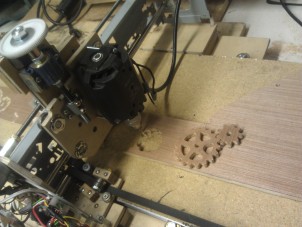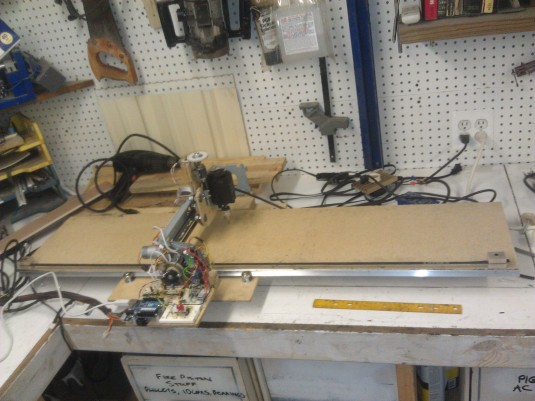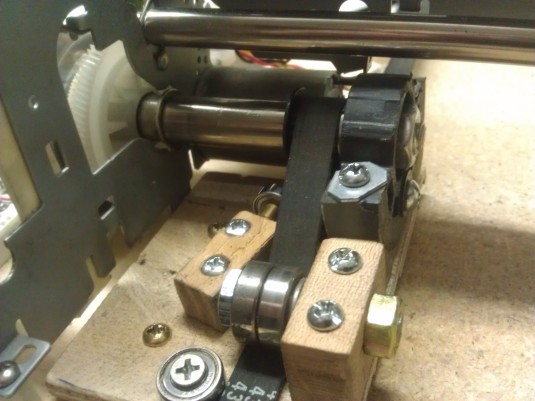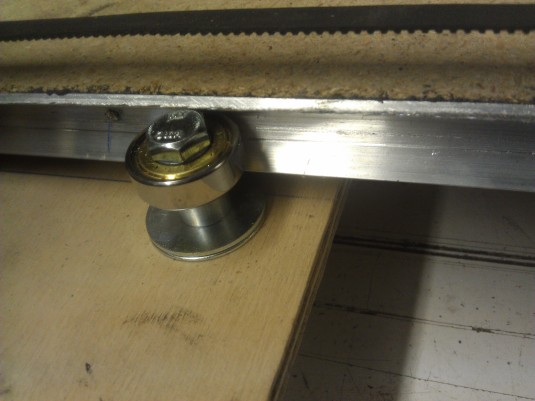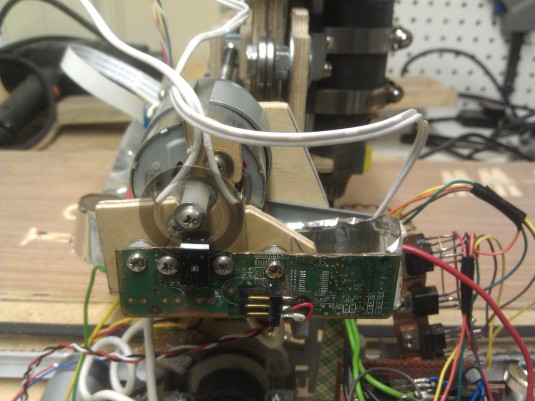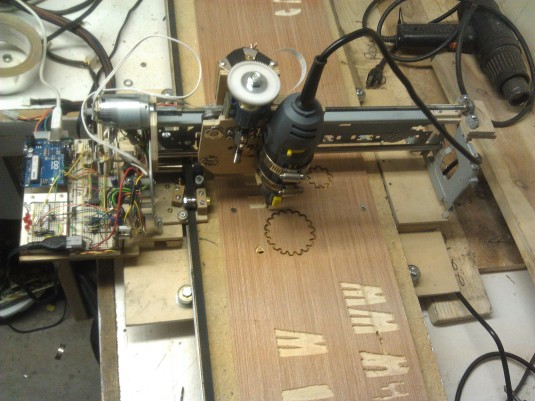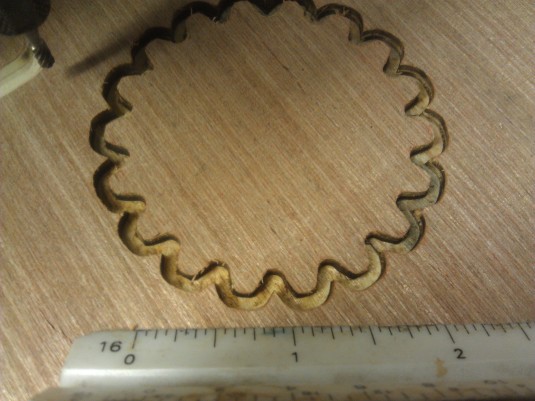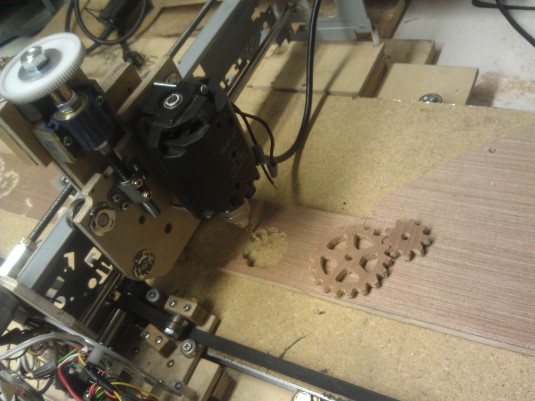 The Pen-Plotter Turned Wood Router from an old dell printer, this time cutting a sign for my workshop, and some wooden gears!
The Pen-Plotter Turned Wood Router from an old dell printer, this time cutting a sign for my workshop, and some wooden gears!
In the video, the CNC machine is still using for the Y axis, the original friction roller from the inkjet printer’s paper feed! I thought that I might use this for continuous feeding long strips of wood, theoretically unlimited. But I gave that idea up pretty quickly. There seemed to be accuracy problems, but later I determined it could have been a belt slipping on the X axis. Anyway, now the Y axis is a 36-inch long board with v-shaped aluminum angle rails, and a toothed belt drive.
Some closeups of the belt drive:
The V-rail with standard ABEC skate bearings:
The machine’s frame is made from marine-grade 1/4″ birch plywood with 5 plies.
Then later I upgraded the X axis from belt drive (it had a VERY thin toothed belt that was skipping) to a screw. Boy I love allthread! This is by far the most solid drive. I was worried that it would be slow, but the DC motor + optical encoder type of positioning is both snappy and accurate. If I were to buy a Shapeoko, I would immediately upgrade the drives to these.
I have also changed out the spindle to a dremel. The motor that I was using was very powerful and high speed, but it vibrated badly due to the poor chuck alignment.
Now with a dremel and screw driven X axis, I can cut even more precisely, but it’s slower. Here’s a closeup of a gear partway through cutting. The width of the tool is 2.8mm.
That gear shape was generated using Matthias Wandel’s excellent gear generator program, and the g-code generated with BlenderCAM. The dremel is set to cut 0.5mm per pass, so it takes a bit to get through 1/4″ or 3/8″ plywood.
All in all, I’ve learned a lot about CNC machines. Especially considering that 3 months ago I didn’t know the first thing about G-Code or GRBL software etc. Now, I will probably put this CNC machine to use cutting out precise parts for a bigger machine that will operate my 1.25hp Black & Decker router, and have a much bigger work area, more like 4×8 feet. This machine has about 24″ x 10″ work area.
Ultimately I hope to cut puzzle joints and plywood panel shapes for some more boat building projects.
